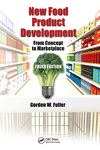“Redefining Value” heads Innova Market Insights’ Top Ten Trends for 2023, as consumers adapt to a global cost-of-living crisis in the face of economic and political volatility. With budgets stretched and supplies under strain, brands need to be flexible in action and open in spirit to connect with consumers, while also taking full advantage of rapidly emerging technological opportunities.
The annual trends from food innovation and insight specialist Innova are based on wide-ranging global consumer surveys. Coupled with comprehensive market and new product data, they reveal not only what is driving consumer decisions now, but also ways in which brands and innovators can successfully adapt to future realities.
Over the last year, cost and value for money have become more important to more than half of food and beverage consumers worldwide. Today’s shoppers are increasingly exploring money-saving strategies, such as choosing lower cost items and cooking from scratch. But they remain determined to sample new experiences, ensure personal wellbeing and support planetary health. There is more pressure on brands and manufacturers to deliver value while still meeting these wider public expectations.
“Redefining value throughout the food and beverage industry will lead in 2023 as consumers seek brands that listen, understand, and respond to their core values. They want brands that provide quality, trust, and confidence via their product formulations, communications, and wider sustainability actions,” highlights Lu Ann Williams, global insights director at Innova Market Insights.
In addition to a heightened demand for competitive pricing, consumers have told Innova they still seek nutritional value and expect a continued shared responsibility for environmental security. Meanwhile, younger generations who have grown up in an inclusive digital age are gaining greater influence, changing markets and creating new opportunities. Against that complex backdrop, here’s a taste of what Innova’s Top Ten Trends show is in store for the food and beverage industry in 2023:
1. Redefining Value
Brands, innovators, producers, and consumers are wrestling with rising costs and greater instability. Combating this requires a deep understanding of where consumers draw the line on compromise. Strategies such as simple price increases, or flexible ingredient lists to cope with supply chain fluctuations, can work in the short term. However, brands need to be open in their communication and clearly show the benefits they are bringing.
Despite political and economic volatility becoming the second biggest concern for consumers in 2022, the health of the planet remains the top global issue and financial pressures are leading to an increase in eco-friendly behaviors. Consumers tell Innova they have reduced food waste and upcycled or recycled more as part of their belt-tightening. As the cost-of-living crisis continues, brands can achieve success through actions that combine economic benefits with clear health and sustainability goals.
2. Affordable Nutrition
Over the past 12 months, 62% of consumers have reported a noticeable rise in the cost of their food and beverages. As a result, they are turning their attention to simple but nutritious goods that are affordable. Key behaviors include buying in bulk, opting for private labels, cooking from scratch, reducing spending on luxury items, and purchasing fewer items. Consumers are actively looking for affordable ways to maintain a healthy diet, offering brands many opportunities to test their capabilities to new limits. To meet the nutritional, environmental, and economic demands of consumers, manufacturers must innovate to extract maximum value from raw materials and the production process.
3. Generational Push
Younger consumers, raised in an interactive digital world, are creating trends and defining what markets should be providing. For Gen Z and mllennials, food and brand choices are important signifiers of lifestyle, beliefs, and values. These demographics have a strong voice and are used to sharing their views openly and widely. While health is an increasingly important purchase driver—as it also is across older generations—novel and international flavors are winning the hearts of a young and experimental audience. These consumers embrace the new and different, while being extremely responsive to positive engagement from brands.
4. Plant-Based: Unlocking a New Narrative
The rapid rise of the plant-based sector has, almost inevitably, hit some roadblocks, necessitating a refocusing on consumer demands for high quality, flavorsome products. No longer merely a mimic, green gastronomy will blossom as a standalone sector in 2023, giving brands significant opportunities to diversify and expand. Consumers still want to see improvements in taste and texture, but there is a huge appetite for culinary creativity and worldwide flavor profiles. Two-thirds of respondents to Innova’s global survey expressed a desire to try plant-based versions of traditional, local cuisines. The industry is responding with a large increase in ready-meal offerings, while there is great scope for expansion into meal kits and inventive recipe combinations. Interest in underused ingredients is also growing, creating opportunities to introduce variation in flavor and nutrition while simultaneously addressing supply concerns.
5. Farming the Future
Public curiosity for innovative technologies such as vertical and regenerative farming is increasing. As well as helping to maximize flavor, nutrition and yield, these advances can win consumer support where they are shown to improve the quality and sustainability of global food production. Today’s consumer is increasingly invested in the source of food as it ties in with major global concerns of health, sustainability, and waste. The welfare of agricultural workers is equally important, with 65% of respondents to Innova’s surveys agreeing they would rather buy fruit and vegetables from farmer’s markets than large stores. Brands need to demonstrate how novel production techniques are benefiting farmers, people, and the planet.
Commenting on the food and beverage industry’s future direction of travel, Lu Ann Williams reveals: “At Innova, we have seen a considerable consumer demand for value redefined throughout the supply chain, with creative and flexible approaches to the use of technology and reducing waste proving pivotal. With financial concerns a dominating factor, 2023 is a significant year for new developments that answer these growing demands. Based on our consumer and market research, our Top Trends deliver insights to support brands as they innovate and grow.”









